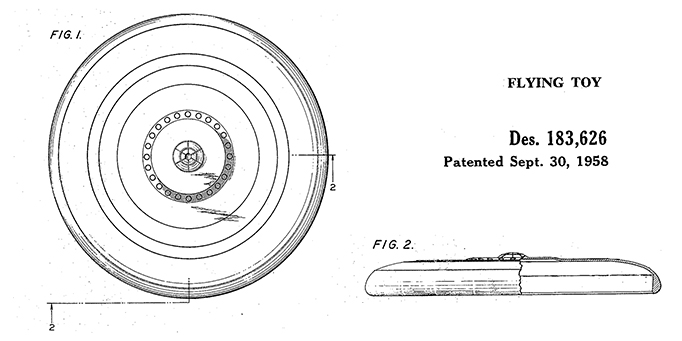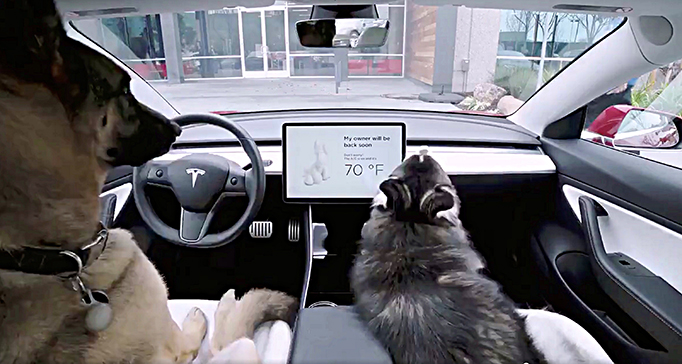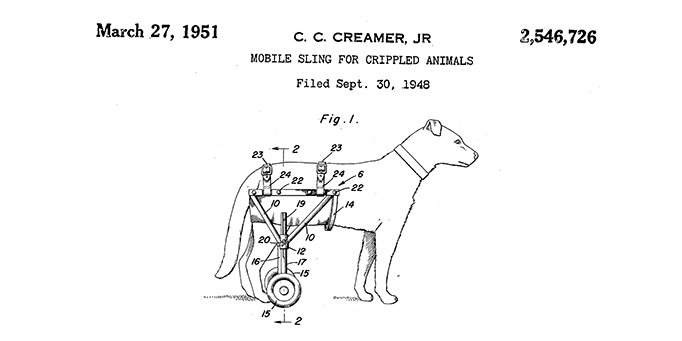Dog Days of Summer
Guest blog by Deputy Under Secretary of Commerce for Intellectual Property and Deputy Director of the USPTO Laura Peter
“Sitting back in the evening, stargazing and stroking your dog, is an infallible remedy.”
-Ralph Waldo Emerson
The “dog days of summer” have arrived! According to the Farmer’s Almanac, they traditionally take place from July 3rd to August 11th. You may be surprised to learn that the phrase “dog days of summer” originated with the Greeks and Romans and is derived from the “dog star” Sirius and its position in the sky during this time. These days may be the hottest days of the year, depending on your latitude on Earth.
Intellectual property (IP) rights power the U.S. economy across many industries, including the pet sector. Patents on technical innovations and trademarks on branding are critical assets in the pet industry. In fact, legal specialization to support the pet industry has taken off: a number of law firms have now launched practices around food, beverage, and pet issues, representing a wide array of industry leaders on matters ranging from litigation, regulatory, and IP rights. Similarly, government oversight over the pet industry has grown to agencies including the Food and Drug Administration, the U.S. Department of Agriculture, and the Federal Trade Commission.
Growth in the pet sector has soared, and shows continued economic strength, even during times of recession. Currently, sixty-eight percent of U.S. households, or about 85 million families, own a pet. Over 43 million of those households own dogs. In 2018, the pet industry in the United States was $72 billion; it is estimated to exceed $75 billion in 2019. The largest sector of this industry is pet health care, with $18 billion spent on vet care and $16 billion spent on supplies and over the counter medication. A close second is the pet food sector, which grossed $30 billion last year. Dog owners spend almost $1,300 a year on their pets.
Underpinning the powerful growth of the pet industry economy is strong IP protection. While we may be familiar with some of the big brand names in the pet retailer space, we are also seeing record-setting growth and entrepreneurial activity and inventions by new innovators. Entrepreneurs launching start-ups and building new businesses rely on patent protection and trademark registration as a means of differentiating their products and attracting customer loyalty. Also, IP protection wards off infringers and counterfeit goods. However, even though legally empowered with intellectual property rights, sadly, the threat of counterfeiting now requires the Environmental Protection Agency and other regulators to post frequent warnings about the dangers of counterfeit pet medicines and/or pet food that can harm pets, as well as nascent businesses.
So let’s take a closer look at some examples of innovations driving this thriving industry.
- The Frisbee™ is still one of the most beloved dog toy inventions. Fred Morrison created and sold the first flying disc toy, named the Pluto Platter in 1955. Morrison filed a design patent (U.S. Patent No. D183,626) in 1957. He then sold the rights to Wham-O, who renamed the toy and received a trademark registration for “Frisbee” in 1959, named after the pie tin sold by the Frisbie Pie Company in the late 1800s. While working for Wham-O, Edward Headrick designed an improved “Flying Saucer,” for which he was granted a patent in 1967.

Morrison patent for "flying disc toy."
- The automotive market has expanded to cater to our pets. For example, Tesla has created a “dog mode” so you can leave your pet in the car with the air conditioning (or heat) on while you run a quick errand. The console informs people passing by: “My owner will be back soon. Don’t worry! The A/C is on and it’s [temperature].”

Tesla has created a “dog mode” where pets can be left in a car for a short time with the air conditioning (or heat) on. (Photo courtesy of Tesla)
- In the fitness sector, you can track your pet’s activity with “smart collars,” which function similarly to the human activity tracker, FitBit. There are multiple patents directed to tracking systems for monitoring a pet’s location, activity, training, and creating virtual fences.
- To keep our pets safe, implantable microchip devices equipped with GPS can help find the almost 10 million pets that are lost every year. Numerous patents directed to implantable microchip devices, which are generally the size of a grain of rice, can be implanted by your local veterinarian.
- Some pets struggle with health problems, including joint ailments or even lost limbs. In the 1950s, inventor Carl Creamer received a patent for a “Mobile Sling for Crippled Animals” (U.S. Patent No. 2,546,726). These veterinary prosthetic carts are intended to help animals experiencing a range of health issues including, spinal damage, forelimb or shoulder pain or weakness, degenerative myelopathy, elbow dysplasia, and other joint and limb ailments. His patent has spawned a cottage industry of device manufacturers working on a range of new and improved designs to assist with a variety of ailments for a range of breeds.

Carl Creamer patent for "mobile sling for crippled animals."
- Taking this to another level in the health industry, prosthetic implants made by 3D printing techniques can help disabled pets attain a better quality of life. Many of these devices were inspired by similar devices designed for humans. Virginia-based Animal Ortho Care, and its founder Derrick Campana, was one of the first to use 3D-printed prosthetics for animals. He is one of only 10 people in the world to design prosthetics for animals, including elephants, cows, goats, horses, dogs, and cats.
Throughout the “dog days of summer,” including National Dog Day on August 26th, follow the USPTO on Twitter, Facebook, and Instagram for more examples of pet-related inventions and trademarks, as we celebrate the ways in which these inventions have made our pets — and us — happier, healthier, and safer.
Posted at 12:16PM Aug 22, 2019 in USPTO | Comments[2]


Posted by AHMED DEBABI on August 22, 2019 at 02:44 PM EDT #
Posted by jon on August 22, 2019 at 02:45 PM EDT #